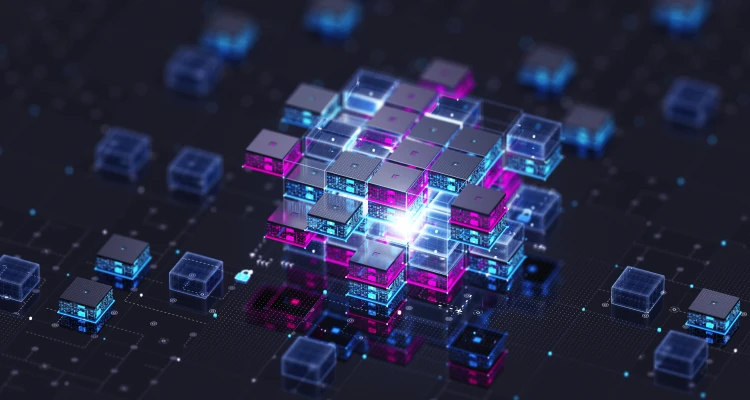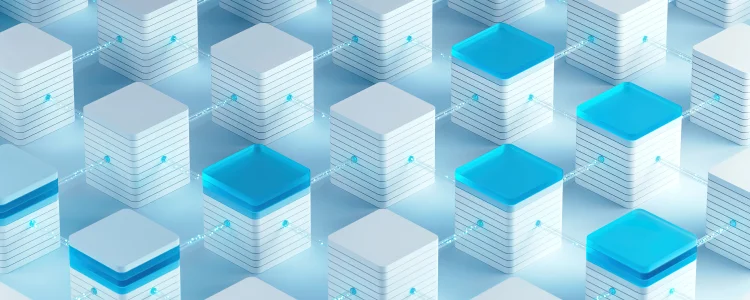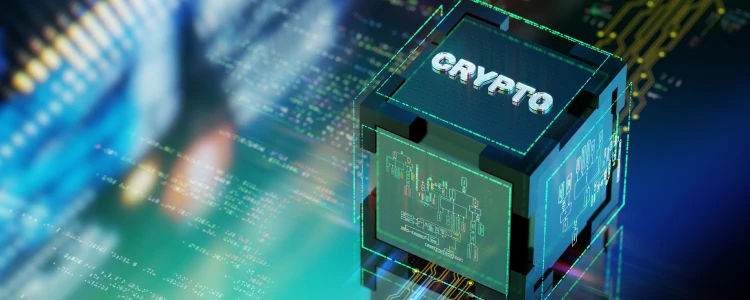Layer 1 vs Layer 2: What’s the Difference Between these Blockchain Layers?

Blockchain tech has revolutionized many industries, from finance to supply chain management. It offers unprecedented levels of security, transparency, and efficiency. But as blockchain adoption grows, so too does the need for more efficient blockchain scaling solutions.
Layer 1 and Layer 2 blockchains play essential roles in addressing these challenges, ensuring that blockchain remains efficient and viable for widespread use. But what exactly are these layers, and how do they actually impact blockchain technology?
ServerMania, an expert at hosting servers for over twenty years, offers blockchain hosting server solutions for your own blockchain node, GPU server, or anything in between. We’ve excelled at helping our partners create and manage their server hardware, even for complex setups, like blockchain.
In this article, we’ll cover what the differences are between Layer 1 and Layer 2 blockchain scaling solutions, how they work, and some real-world applications. Plus, we’ll go over what exactly you may need to look for in a blockchain server.
See also: What is Blockchain Node Hosting and How Does it Work?
Delving Into Layer 1 Blockchain
Before we dive into the specifics, let’s explore what a blockchain is. A blockchain is a type of digital ledger—one that is secure, transparent, and decentralized, maintaining a constantly growing number of records (blocks) linked and protected with cryptography. It is the foundation of cryptocurrencies and is also used in other sectors like finance and supply chain management.
Now, Layer 1 blockchain is the terminology used to refer to the underlying blockchain architecture. It’s that foundation we just talked about, creating the base blockchain protocols that manage the consensus mechanisms, which is the process used to validate transactions and mint new blocks without a central authority.
Some common examples of Layer 1 blockchains include Bitcoin, arguably the most famous cryptocurrency, and the Ethereum blockchain, which introduced smart contracts that have expanded the capacity of blockchains from just currency to a platform for decentralized applications.
Despite how significant they are, Layer 1 blockchains face many challenges. Scaling solutions are the most prevalent, as increasing transactions can lead to network congestion and higher transaction fees. As more users join and the volume of transactions increases, these networks can become sluggish and congested. This leads to slower network speeds and higher transaction fees, and for some proof of work (PoW) blockchains (like Bitcoin), they come with environmental concerns due to the energy consumption required to power them.
To help mitigate some of these shortcomings, developers have been working on multiple different approaches to blockchain scaling solutions. For Bitcoin, the addition of Segregated Witness improved the number of transactions that could fit on a block. Etherium transitioned to an entirely new 2.0 version that shifted to proof of stake (PoS) consensus mechanism and other enhancements like sharding to improve scalability and reduce energy consumption.
Unpacking Layer 2 Blockchain Technology
Layer 2 blockchains are secondary frameworks built on top of the existing Layer 1 blockchains. Their primary purpose is to offer scaling solutions to the underlying blockchain network by increasing speed and efficiency when processing transactions. By offloading some of the processing tasks from the main chain to these secondary layers, Layer 2 solutions aim to mitigate the shortcomings of network congestion and high transaction fees.
One of the most prominent examples of Layer 2 solutions is Bitcoin’s Lightning Network, which was designed to improve transaction speed and reduce costs. The Lightning Network operates by creating off-chain payment channels between users, allowing for rapid and low-cost transactions that are eventually settled on the main chain.
On the other hand, Etherium has employed two different functions for scaling solutions. Their first, Plasma, works by creating a smaller side chain that handles the bulk of transactions off-chain and periodically commits the final state to the main blockchain. Rollups, the second scaling solution, bundles multiple transactions into a single batch and then processes it off-chain, with only the final state recorded on the main blockchain. These both drastically reduce the amount of data that needs to be processed on the main network, boosting its throughput.
The benefits of Layer 2 blockchains are pretty compelling: enhanced scalability, speed, reduced fees, and the potential for broader adoption of blockchain are all excellent reasons to get behind layer 2 blockchain technology. However, this doesn’t mean they’re perfect solutions. They come with their own set of problems, such as security vulnerabilities from off-chain processing, the potential for centralization, and the complexity of integrating these solutions. Plus, ensuring seamless operations between layer 1 and layer 2 is crucial to maximizing their benefits, which isn’t an easy solution.

Comparing Layer 1 vs Layer 2
Both Layer 1 and Layer 2 blockchains play vital roles within the blockchain ecosystem, but they address different aspects and challenges. Layer 1 solutions are vital to the core operations of blockchain, while Layer 2 build atop these to offer better blockchain scaling solutions. Let’s compare these two in the most critical areas that matter.
Scalability
Layer 1 blockchains face significant scalability challenges due to their decentralized nature, leading to network congestion and high fees during peak times. For instance, Bitcoin’s and Ethereum’s networks can become sluggish when transaction volumes surge. Layer 2 solutions, like the Lightning Network for Bitcoin and Rollups for Ethereum, address these issues by processing transactions off-chain, significantly increasing throughput and reducing costs. While Layer 1 improvements like Ethereum 2.0 exist, Layer 2 solutions provide immediate scalability enhancements.
Security
Security is paramount for these networks, as cyberattacks are frequent and can be devastating. Layer 1 blockchains are inherently secure due to their decentralized consensus mechanisms, such as PoW or PoS. Layer 2 solutions rely on the security of their underlying Layer 1 chains but introduce additional security considerations. Off-chain processing can expose vulnerabilities and potential attack vectors, which means Layer 2 protocols must be secure.
Decentralization
Decentralization is a core principle of blockchain, ensuring that no single entity controls the network. Layer 1 blockchains maintain high levels of decentralization through their consensus mechanisms. However, some Layer 2 solutions may introduce centralization risks due to the need for specific nodes or operators to manage off-chain transactions. Balancing scalability and decentralization is a critical challenge for Layer 2 solutions, and ongoing innovations aim to minimize centralization while enhancing performance.
User Experience
User experience (UX) is a significant factor in the adoption of blockchain. Layer 1 blockchains often suffer from slower transaction times and higher fees, negatively impacting UX. Layer 2 solutions improve UX by offering faster transactions and lower costs, making blockchain applications more accessible and practical for everyday use. However, the complexity of integrating Layer 2 solutions can be a barrier for some users. Streamlining the interaction between Layer 1 and Layer 2 can enhance overall user experience and drive broader adoption.

Practical Applications and Implications for Server Infrastructure
Blockchain tech has shifted beyond it’s original implementations of cryptocurrencies, opening up a wealth of options with the addition of smart contracts and distributed ledgers. However, the impact of layer 1 vs layer 2 blockchain scaling solutions is still relatively new, meaning the future may be unclear as to how they evolve. For now, let’s explore how they’re currently making an impact in real life:
- Payment Processing: Blockchain provides fast, secure, and low cost payment solutions, bypassing traditional banking systems. The widespread adoption (and mixed success) of Bitcoin and their Lightning Network are great examples of this.
- Decentralized Finance (DeFi): Platforms like Ethereum enable DeFi applications, offering financial services such as lending, borrowing, and trading without a third party with the use of a smart contract.
- Non-Fungible Tokens (NFT): While they’re no longer as popular as they used to be, NFTs are used to represent ownership of unique digital assets. Ethereum’s blockchain supports creating and trading NFTs, which made a significant impact within the art, gaming, and entertainment industries.
- Supply Chain Management: Blockchain ensures transparency and traceability in supply chains, from production to delivery. IBM’s Food Trust is a notable example of this already in use today.
However, while the benefits of these technologies is clear, they still suffer from their own unique challenges, especially when it comes to blockchain server hardware.
- Computational power: Blockchain servers require significant computational power to handle transaction validation, mining, and running smart contracts. This is especially true for Layer 1 blockchains that rely on PoW mechanisms. GPU servers can help with this.
- Storage solutions: These networks generate a massive amount of data that all needs to be stored securely and efficiently. This data includes transactions, smart contract details, and more. Advanced storage options, such as distributed databases and high-capacity SSDs are essential to manage it efficiently and maintain speed.
- Networking Capabilities: High-speed and reliable network connections are crucial for maintaining any type of blockchain server. They must be able to maintain large volumes of data transmission, ensure low latency for even a single transaction, and maintain synchronization with other nodes in the network.
If you’re looking to overcome some of the infrastructure challenges with using the blockchain and building on it, consider ServerMania’s AraCloud cloud server hosting which is a high-availability, scalable, and robust solution that can grow along with your crypto business.
Maximizing Your Blockchain Scaling Solution
Understanding the differences between Layer 1 and Layer 2 blockchains, while relatively new, are quickly becoming an essential part of the tech ecosystem. While Layer 1 provides the basic foundations for blockchains, the addition of a second layer to assist with scaling has become a need as more transactions happen.
However, without the proper server infrastructure, businesses can face significant issues when it comes to power, performance, and efficiency. Investing in the right server hardware is key to maximize the benefits of these networks, and that’s where ServerMania shines. We’ve helped our partners get the most out of their server infrastructure, whether it’s for your Layer 1 blockchain or setting up a GPU server, we’ve got you covered.
Was this page helpful?

